SELL PARADISE
- The project aims to create a sandbox adventure game inspired by the ecological behavior of hermit crabs. Set on a small coastal island, players experience survival, growth, and adaptation in an ever-changing environment shaped by tides, limited resources, predators, and competition. The game also serves as a metaphor for human career development, workplace competition, and social cooperation.

Project Overview
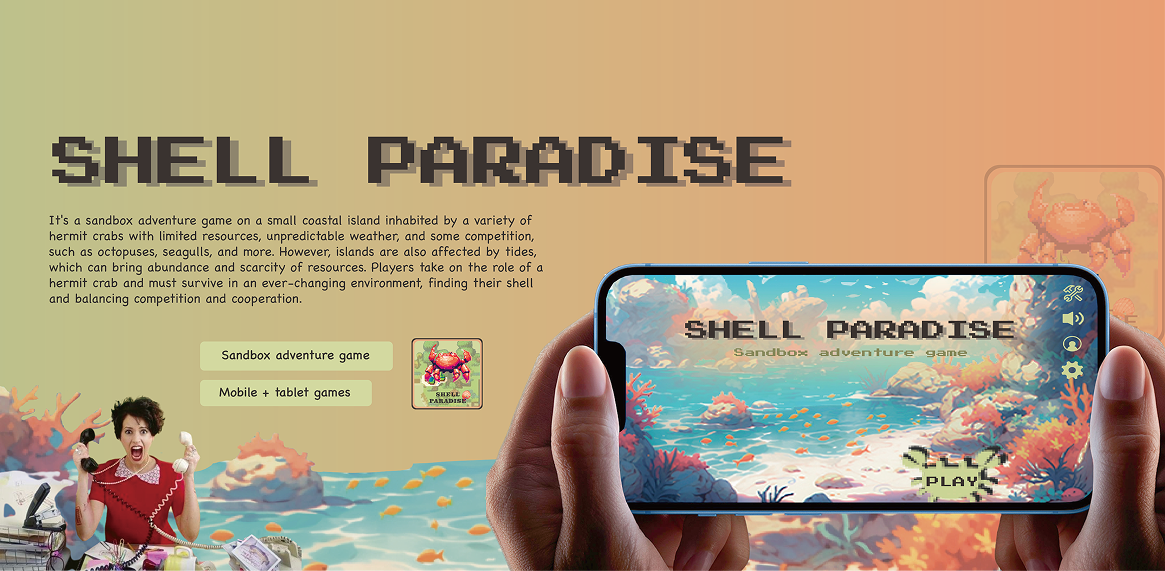
"A survival game that cleverly combines natural ecology with social competition metaphors"
- Game Name: SHELL PARADISE
- Type: Mobile sandbox adventure game
- Platform: Mobile & Tablet
- Duration: 5 Weeks
- Role:
- UI Designer
- Interaction Designer
- Narrative Design
- Game Designer
- Visual Designer
- Tools: Figma / MidJourney / Illustrator / Notion / Photoshop
- Project positioning: combining education with entertainment, simulating ecology and workplace competition
- In an age where competition, adaptability, and resource scarcity increasingly define both the natural and professional world, Shell Paradise explores how ecological survival strategies can metaphorically reflect human career paths. Inspired by the unique behaviors of hermit crabs—who must constantly seek new shells to survive and grow—this mobile sandbox game situates players in a tidal ecosystem filled with uncertainty, limited resources, and unpredictable rivals.
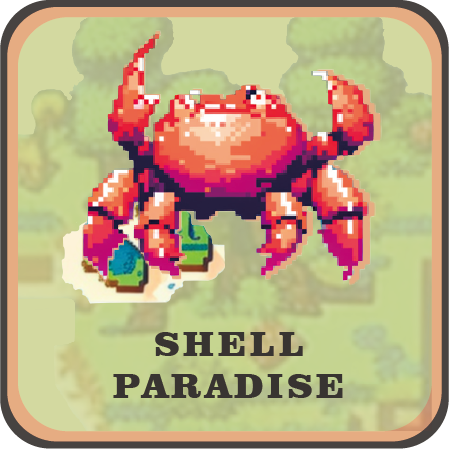
Inspiration
1. Interest in the survival logic of "hermit crabs"
- What is a hermit crab
- Hermit crabs (hermit crabs) are a group of arthropods belonging to the phylum mollusca, belonging to the family Paguridae. Living in both Marine and freshwater environments, they are unique creatures known for acquiring special lifestyles and behaviors.
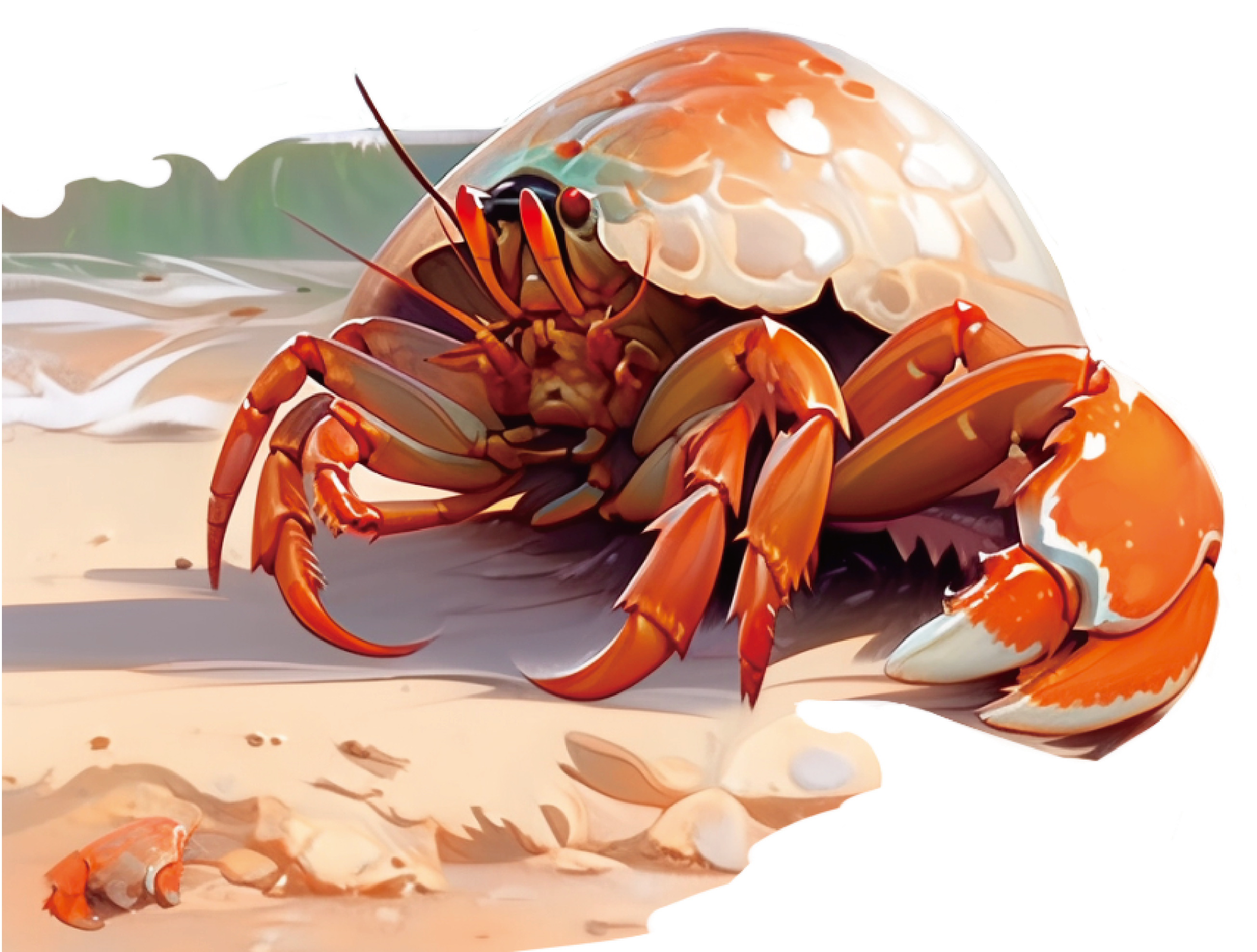
- How hermit crabs behave
- Hermit crabs usually live as parasites, inhabiting dead spirulina, snail shells, or other objects. Hermit crabs' bellies are soft and do not have a protective shell, so they need to find a shell of their own size to protect them from predators in the belly core.
- Why do hermit crabs molt?
- The hermit crab's shell limits their growth. When their body reaches a certain size, the old shell becomes too small, and in order to continue growing, the hermit crab needs to shed the old shell and replace it with a new one.
- Hermit crab environment
- 1. Hermit crabs inhabit coral reefs, intertidal zones
- 2. Hermit crab species inhabit some mudflats and wetland areas, which are usually flooded when tides rise
- 3. Hermit crabs live mostly on beaches, coastlines, reefs and shallow water
- 4. A few species adapted to deep sea and ocean environments
- Career fields + National policies and regulations + Technological development
2. Analogy of human society from the perspective of natural ecology
- Sea anemones and hermit crabs - symbiotic relationships / Family and family members - emotional and physical ties
- Interdependence and Cooperation + Resource Sharing and Shelter Support + Growing Together
- Competitors and food / Competition in the workplace
- Providing shelter and security + Personal growth and adaptability + Resources and opportunities
- Hermit Crab Shell / Work
- Market share + Job competition + Promotion opportunities
- Tides
- Market share + Job competition + Promotion opportunities
Design Process
1. Mindmap

2. Persona
- Players aged 18-35 (light strategy players, like ecological themes)
- Young and middle-aged people who like exploration, survival, and simulation games
- Social people with reflective consciousness (experience workplace metaphors)
3. Sketch
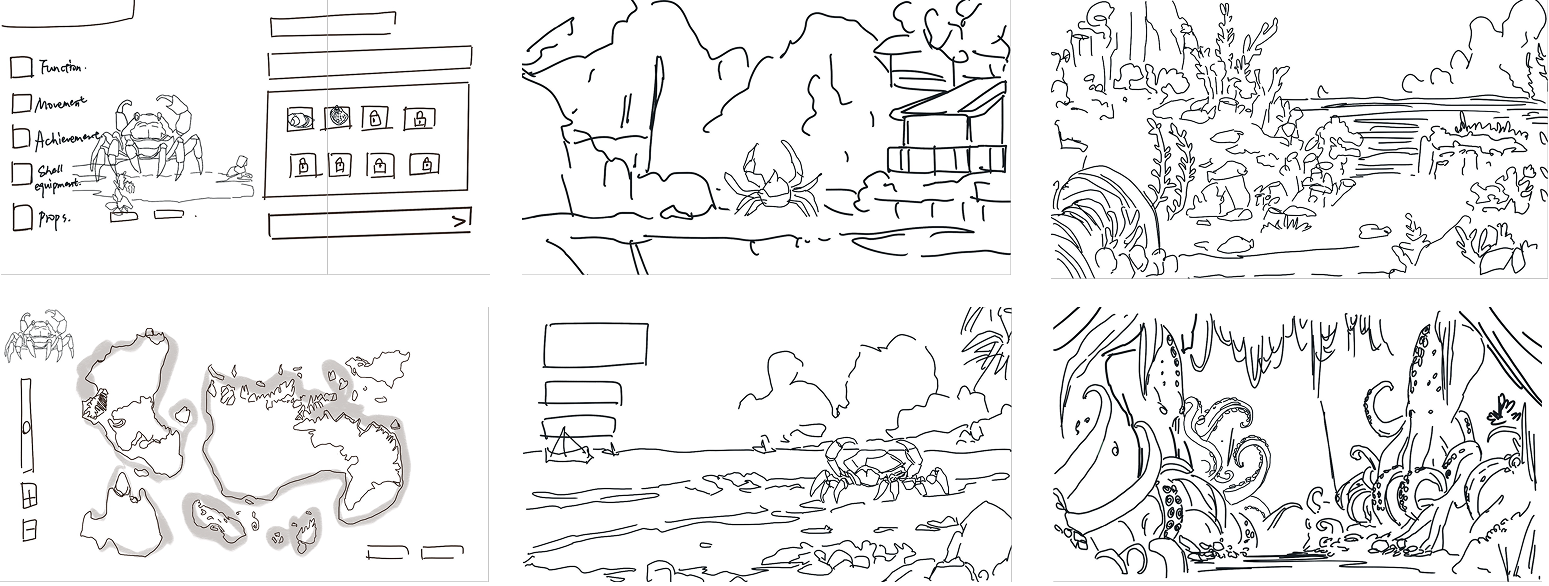
4. Game Element

5. Game Scene
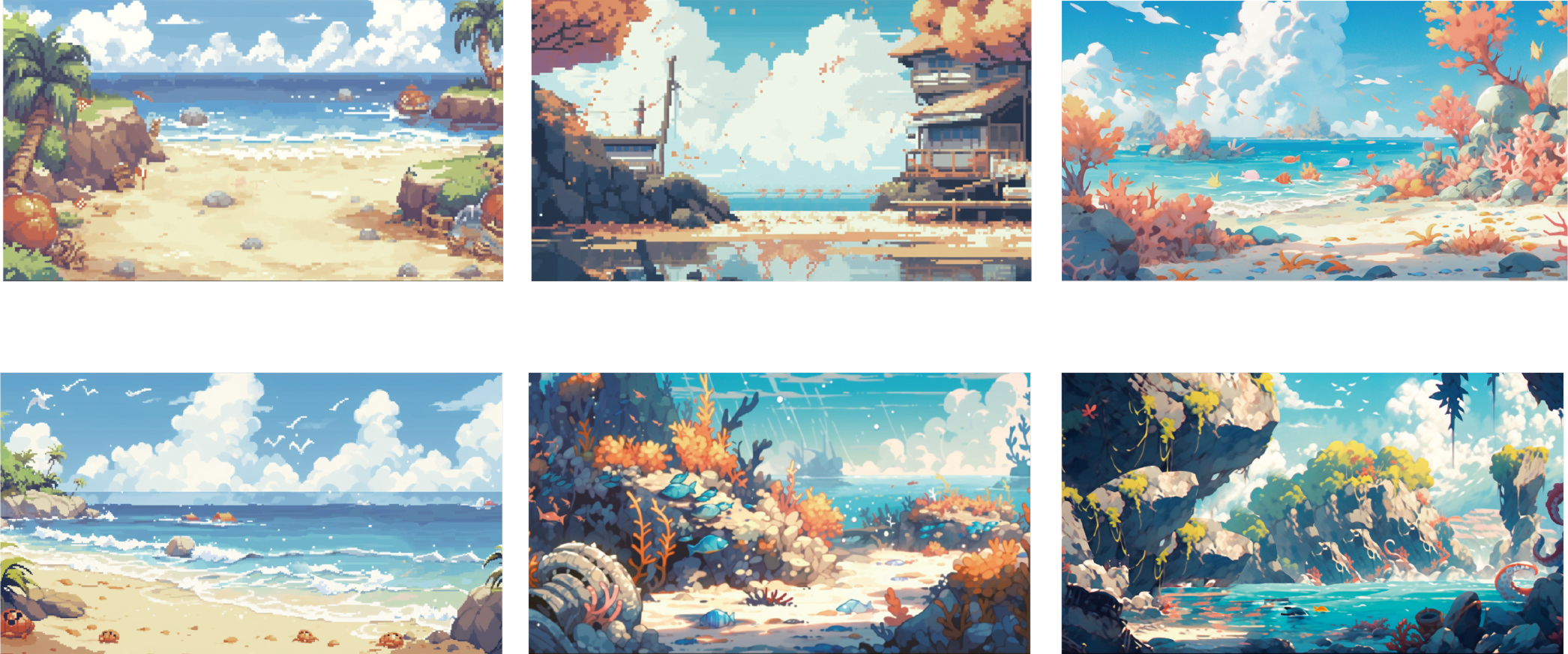
6. Game UI

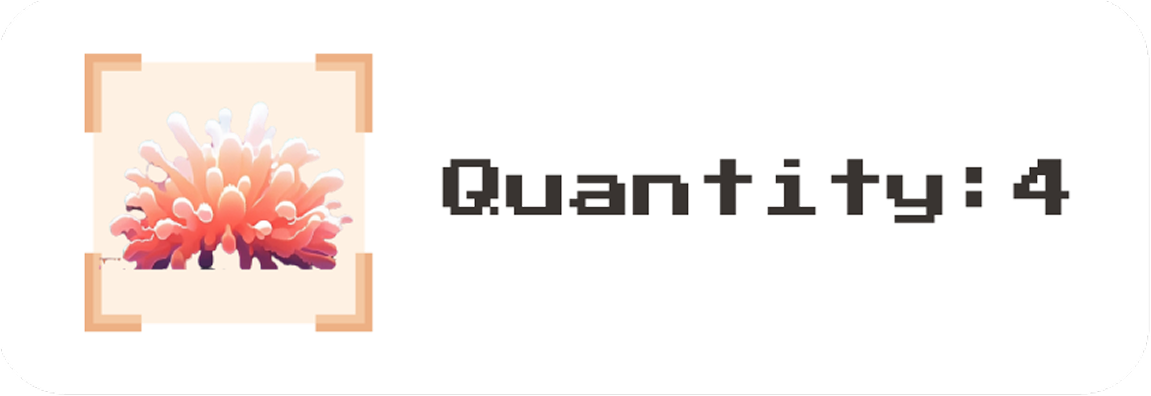

7. Game Parameters
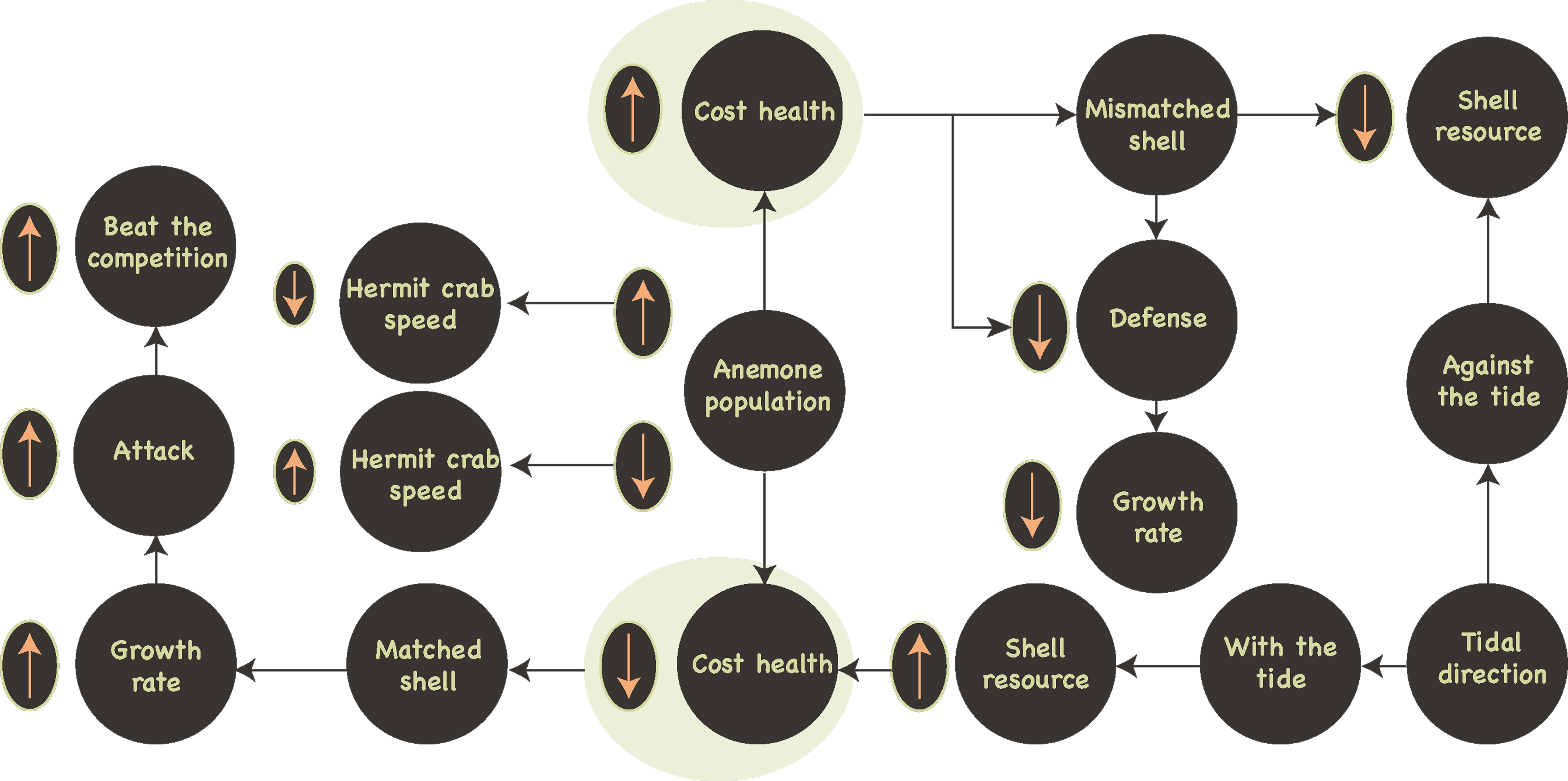
8. Game Behaviours
- Explore coastal islands:
- Players will explore environments such as beaches and caves, discovering a variety of resources, food, and different types of shells
- Collect the shell:
- The shell is the home of the hermit crab, and different shells have different attributes such as firmness and size. Collecting the right shells can provide better protection and survivability.
- Resist a competitor's attack:
- A competitor may try to snatch the hermit crab's shell or attack it. Players need to use their skills and combat skills to defend their shells against competitors' attacks.
- Master the tides:
- Dynamic factors, understanding the cyclical changes of the tides is necessary to make it easier to access food resources at high tide, while also being aware of the risks that the tides may pose.
9. Game interface introduction
- Start Page

- Level Selection

- Role Introduction
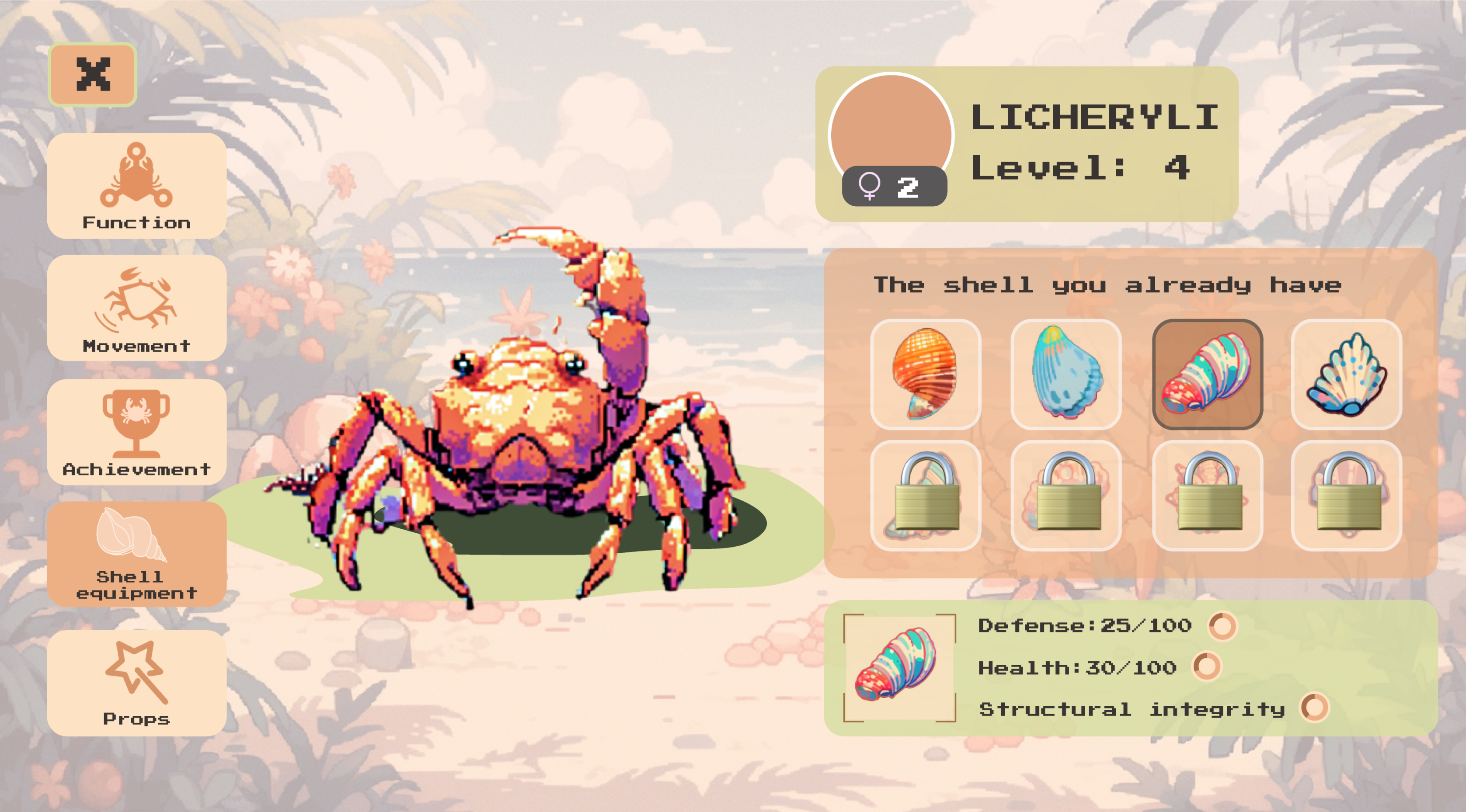
- Main Scene + Tidal Scene

- Matching Shell Page + Replacement Shell Page

- Load Page
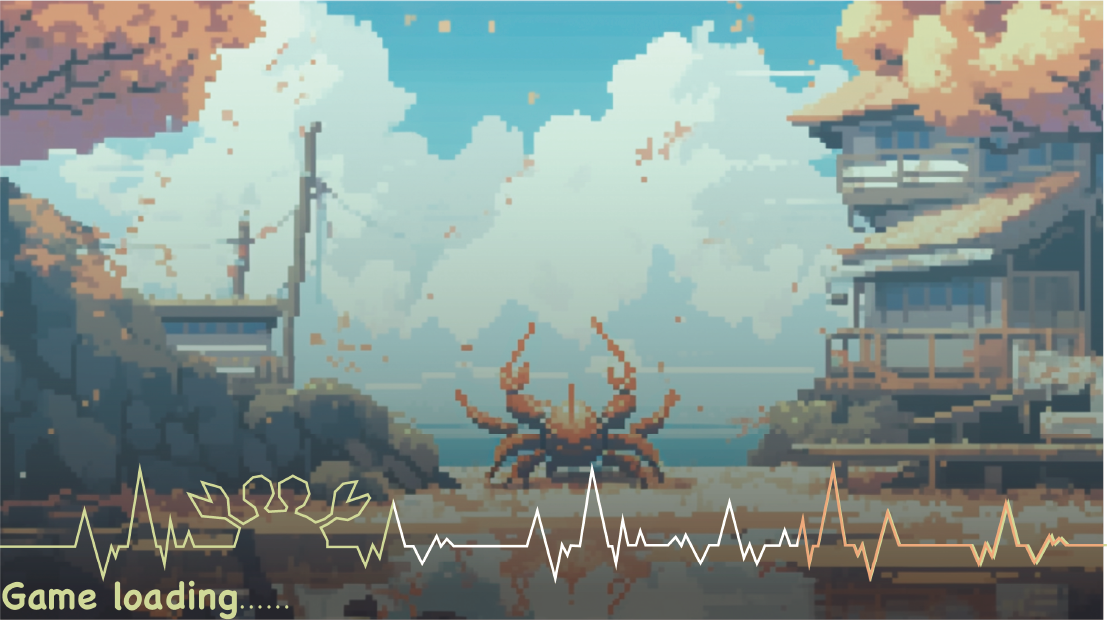
- Map Page
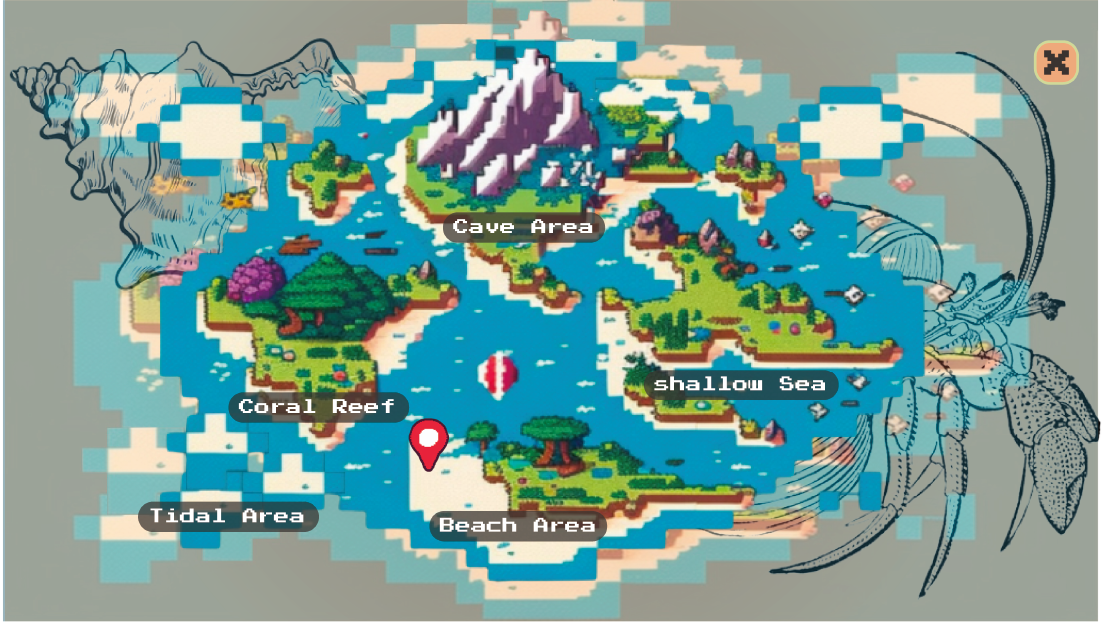
- Fight & Not Page
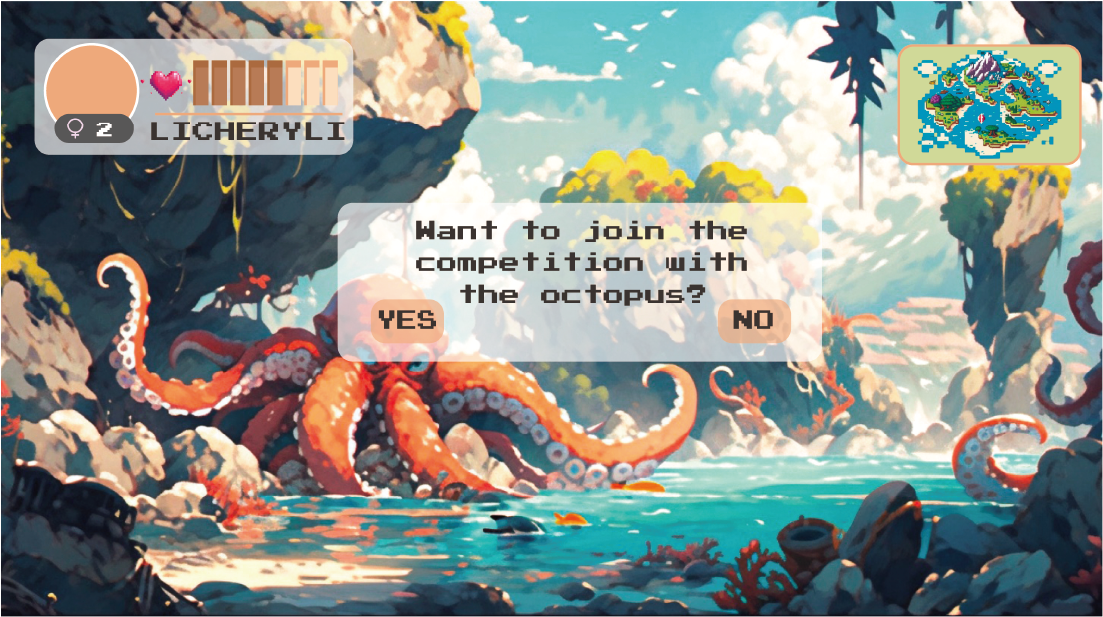
- Competition Page

- Small elements introduction
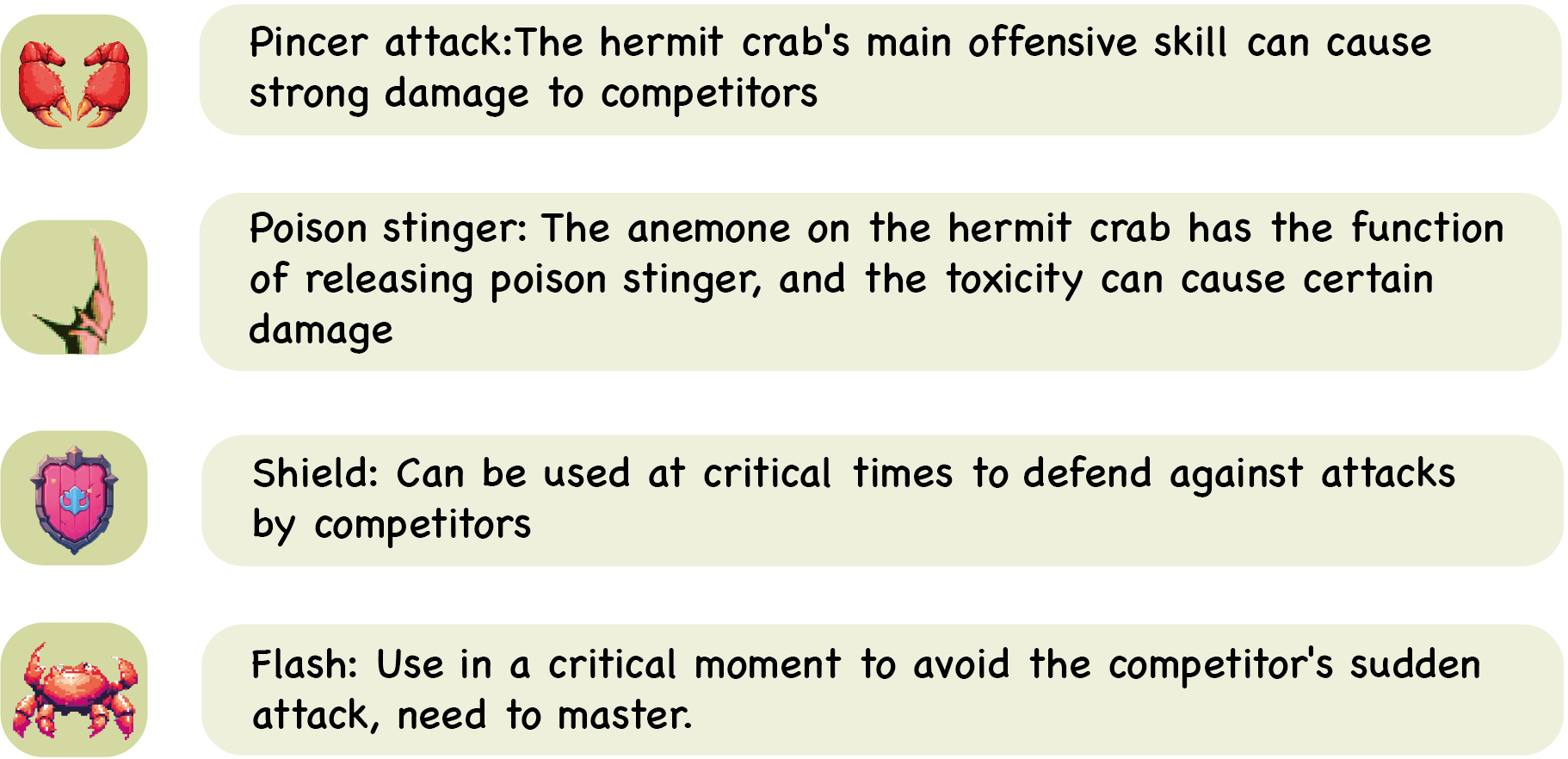
- Competitor: Octopus

Competitor: Octopus
Damage: High
Defense: High
Sensitivity: High
Level: 7
Features: Large attack range, high health
Prototype display


.png)
.png)
.png)
.png)